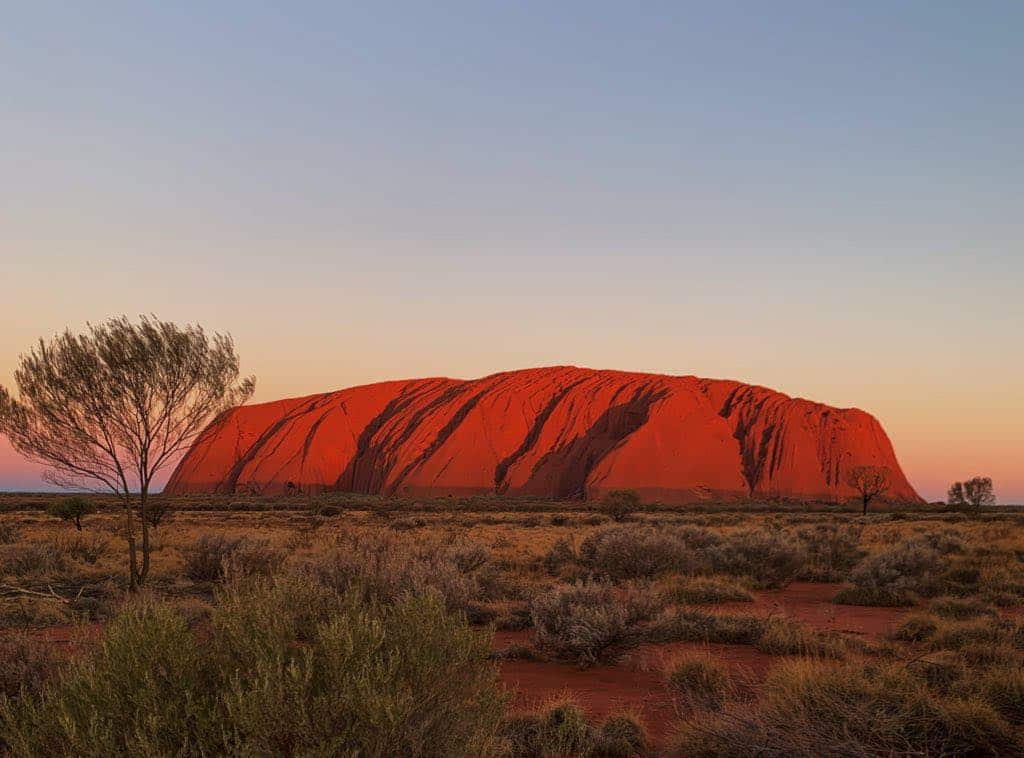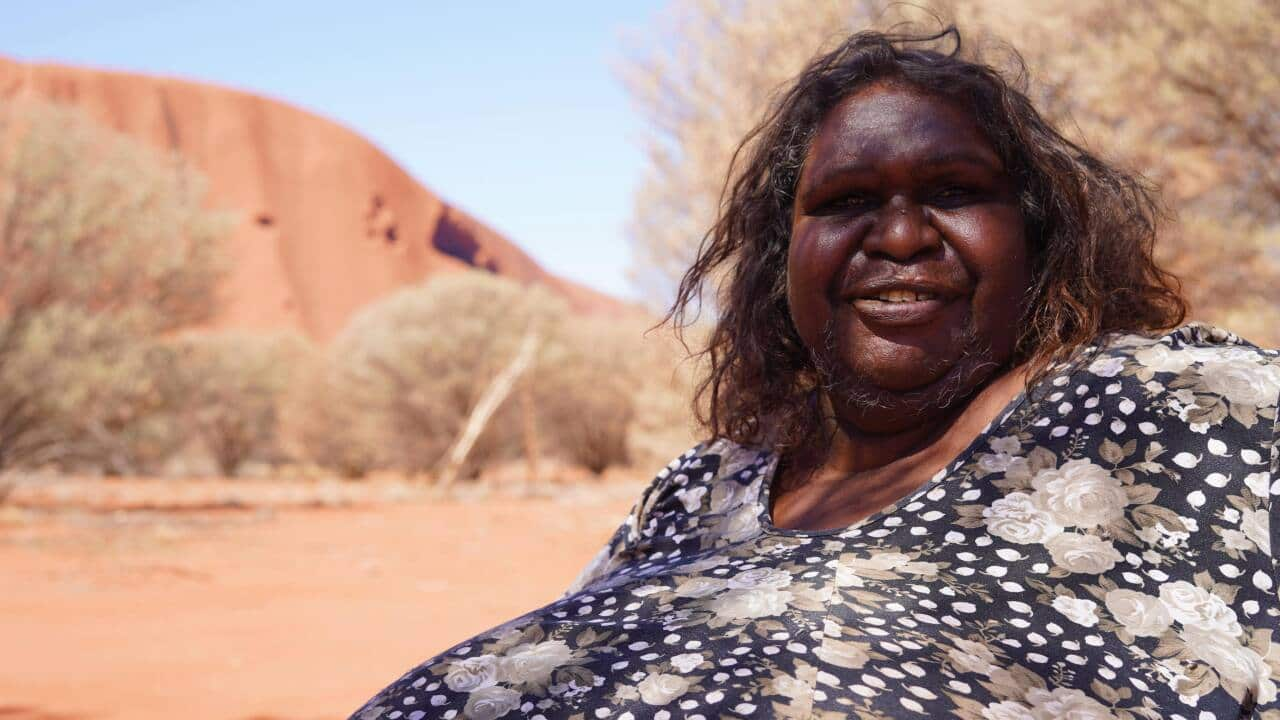It’s one of the world’s most iconic landmarks, holding two heritage site listings and typically drawing thousands from across the globe to Australia’s sunburnt centre.
But for the Anangu Traditional Owners, Uluru embodies much more, with every groove of the giant red monolith said to tell the story of their culture, history, and connection to the land.
Bessie Nipper recounts the moment her father and other Anangu were handed back the title deeds to the region in 1985.
“I was watching as a young woman when my father and other Anangu got their land back, this country, Uluru,” she says, speaking in Pitjantjatjara.
“I’ve become a mother and from there I’ve had grandkids and I still live here at Uluru.” Last year, the handback anniversary was marked with the closure of the climb, a path which is now referred to by locals as the ‘scar’ of Uluru.
Last year, the handback anniversary was marked with the closure of the climb, a path which is now referred to by locals as the ‘scar’ of Uluru.

Uluru is one of the world’s most iconic landmarks. Source: Aneeta Bhole/SBS News
“I was happy when the climb was closed,” Ms Nipper says. “The fact that they’ve stopped the climb, we’re all happy about that.”
Ms Nipper’s sister Theresa said it was an obvious decision to make.
“When we go overseas, we respect their culture - we wait for them to show us around,” she says.
“That’s our rock, it’s sacred. For a long time nobody, none of our great grandfathers, went up - they respected the rock.
“‘Pukulpa’, which means happy. We are the happiest people when the climb closed.” Lynda Wright is a ranger at Uluru-Kata Tjuta National Park and helped put up the permanently closed sign at the foot of the climb.
Lynda Wright is a ranger at Uluru-Kata Tjuta National Park and helped put up the permanently closed sign at the foot of the climb.

Theresa Nipper: "That’s our rock, it’s sacred". Source: Aneeta Bhole/SBS News
Standing at the base of the rock, she points to the sign and says memories of that moment will stay with her for the rest of her life.
“To be a part of it was such a huge honour.”
“We obviously had a lot of people here, including Traditional Owners, and to see their happiness, their tears of joy, it was very emotional and still is.” Following the closure, some local businesses expressed concern they may see a decline in visitation numbers. But while numbers are low, the park’s operations manager Steve Baldwin says it is difficult to truly determine the impact the closure has had on tourists due to the COVID-19 border closures.
Following the closure, some local businesses expressed concern they may see a decline in visitation numbers. But while numbers are low, the park’s operations manager Steve Baldwin says it is difficult to truly determine the impact the closure has had on tourists due to the COVID-19 border closures.

The climb has been closed for a year. Source: Aneeta Bhole/SBS News
“We are quite hopeful with the border reopening and flights coming back that numbers will pick up,” he says.
He also says he’s seen a change in the type of visitors to the region.
“We’re seeing more people coming here to experience the natural attributes and culture.”
“Our research shows that people want to engage with Traditional Owners. They want to learn more about the culture.” Since the climb closure, measures have been put in place to stop the publication of photographs and videos of the scar. Last month, Google removed images of the sacred site to stop people from virtually climbing the rock.
Since the climb closure, measures have been put in place to stop the publication of photographs and videos of the scar. Last month, Google removed images of the sacred site to stop people from virtually climbing the rock.

Park ranger Lynda Wright and operations manager Steve Baldwin. Source: Aneeta Bhole/SBS News
For those still able to visit the site, they say the closure hasn’t deterred them from making the journey to the central desert.
Linda French says she visited the region more than 30 years ago and climbed Uluru while backpacking with some friends. She said at the time it wasn’t the drawcard but “everyone was doing it”. “I remember walking around the bottom and there was rock art, and at the time we were allowed to go very close, there were no, kind of, boundaries.”
“I remember walking around the bottom and there was rock art, and at the time we were allowed to go very close, there were no, kind of, boundaries.”

Tourists enjoy Uluru at sunset from a distance. Source: Aneeta Bhole/SBS News
“Now I feel like the site is being cared for and it’s much better.”
A small ceremony will be held at Uluru to celebrate the 35th anniversary of the handback with the local community.

